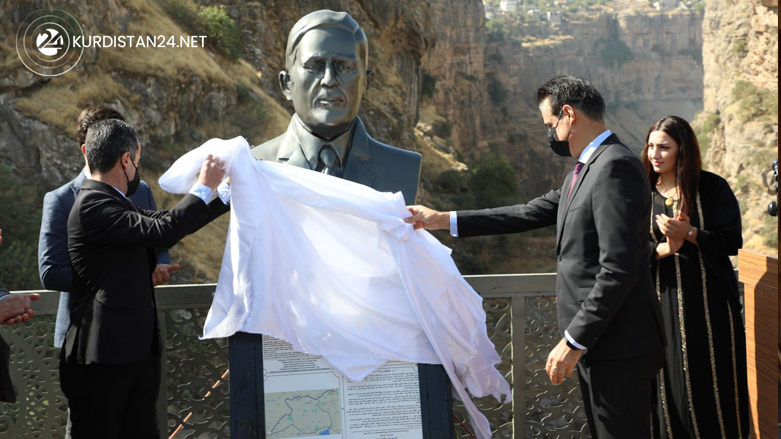Redesigned statue unveiled in Erbil's Rawanduz
"Kurds are loyal people and they serve those who had once served them."

ERBIL (Kurdistan 24) – A newly redesigned sculpture of New Zealand's famous civil engineer AM Hamilton, who oversaw the construction of the first modern road that linked the Kurdistan Region's Erbil province with Iran in the late 1920s, was unveiled in Erbil's Rawanduz on Wednesday.
The redesigned statue honors Hamilton, who once wished his building of modern roads would help connect culturally diverse people.
Overlooking the breathtaking Rawanduz Gorge, the statue was restored with a few modifications by the senior students of the Sculpture Department of the Institute of Fine Arts in Rawanduz.

One reason for improving the statue, according to Dana Mustafa, the head of the institute, is to demonstrate that "Kurds are loyal people and they serve those who had once served them."
The road is considered strategic since it links the Kurdish capital Erbil with various resort areas and the main border crossing with Iran, Haji Omaran.
Construction of the road began in 1928. According to Hamilton's book Road Through Kurdistan, thousands of workers from various ethnicities and backgrounds, including Kurds, Arabs, and Assyrians, worked on the project.

A plaque in three languages of Kurdish, English, and Arabic was installed beneath the statue, providing a summary of his book.
Throughout the decades, numerous battles have been fought for control over the strategically important road.
In his book, which he wrote in 1932, Hamilton described the Kurdish people as "hospitable" and "peace lovers".
Tayfur Mohammad contributed to this report.